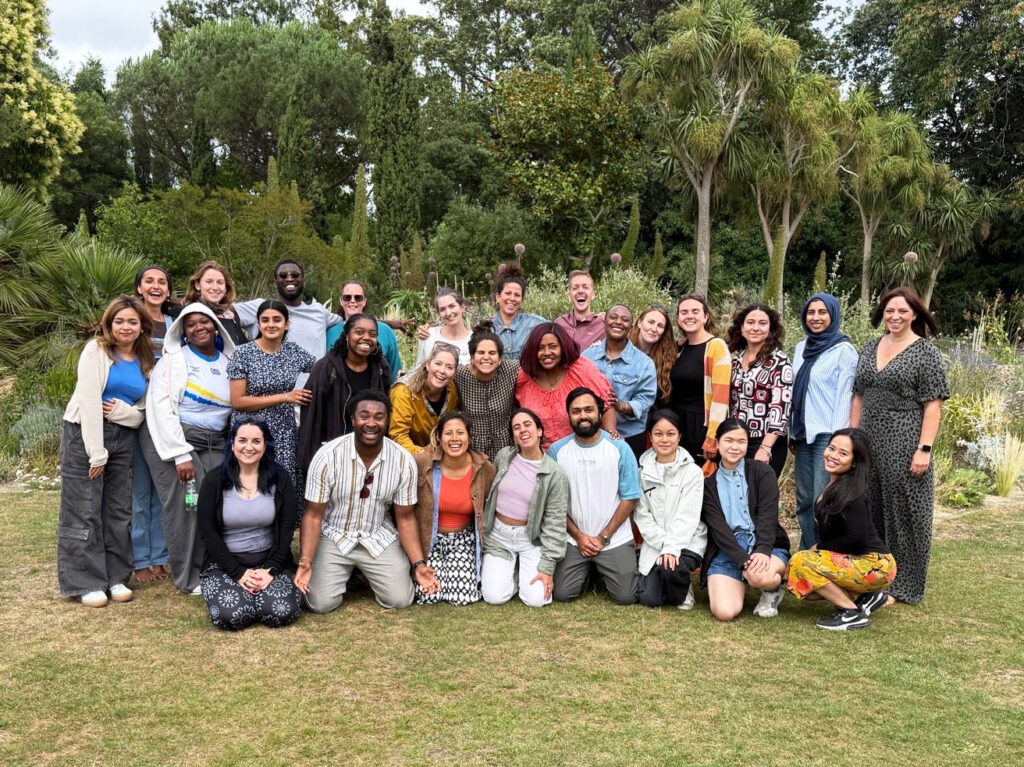RISK AND POWER: NAVIGATING POWER DYNAMICS IN RISK MANAGEMENT

Written by Catherine Scott
Head of Governance and Innovation
This blog is part of a series on risk. If you’re interested in learning more, check out blog 1 on what is risk and why it matters and blog 2 on our approach to risk in practice.
Traditional Allocation of Risk
Traditional risk management frameworks are often very organisation-oriented and reflect competitive and individualistic values. These frameworks tend to operate in a top-down manner, where decision-making is concentrated at higher levels of the organisation. They also often prioritise financial and operational protection of an organisation at the expense of broader social or environmental risks and impacts.
Within these frameworks, liability and responsibility for mitigation (measures that, when implemented, will reduce the impact of a risk) is typically assigned to those deemed to have control or influence over being able to mitigate the most obvious or visible risks. Whilst straightforward, traditional approaches to risk management can have significant consequences, particularly in the context of funder relationships.
Power Dynamics in Risk
So how does power fit into this?
Part of risk management is deciding whether to avoid a risk (e.g. making a business decision not to undertake activity that makes the risk impact possible), transfer a risk (e.g. to a third party), mitigate a risk (e.g. implement the cybersecurity policy) or accept the risk. This means that in part, those making decisions in risk management have the power to decide where and who holds the responsibility and liability for risk, and who or where the impact of that risk is felt most acutely.
Given that traditional risk management has been built with organisational and individual preservation at its core, it is no surprise that typical and traditional funder/grantee arrangements are often grounded in protecting the funder from potential risks of making the grant. And the funder, as usually the more privileged, well-resourced and established entity, has the power to place the liability and mitigation responsibilities onto the individual, group or organisation they are funding. Yet in reality, this means that those with less power and fewer resources are frequently expected to manage risks that they are not set up to handle.
For us at The Social Change Nest, we are particularly concerned about this given (the very welcomed and much needed) increase in funding to traditionally under-served and unheard grassroots and community groups.
Our Approach to Rebalancing Power Dynamics
At The Social Change Nest, we host over 500 community groups, collectives and movements. These groups are made up of activists and changemakers with a passion for social change, and we are committed to doing our part to rebalance these power dynamics, particularly when it comes to risk.
Our approach to risk is centred on standing alongside those we support as equal partners, and we take an active role in helping distribute risk more equitably across funders, ourselves and groups we fiscally host, at all times trying to avoid unhealthy power dynamics that have traditionally placed risk inappropriately on groups or individuals.
We do this by:
- Promoting collaborative risk sharing, so that no single entity bears the full burden of risk.
- Supporting capacity building by providing tools and resources groups need to manage risks effectively, including training, financial management support, and access to networks
- Advocating for flexible funding arrangements that allow groups to adapt to emerging risks and changing circumstances
Shifting power dynamics in the funding landscape
There is a shift in some areas of philanthropy towards recognising and working hard to change power imbalances in funding. Take participatory grant-making, along with the development of local initiatives such Camden Giving, Brent Giving and Barking & Dagenham Giving, allowing community members to influence local funding decisions. Or foundations and funders who’ve devolved decision-making power to local communities and those directly affected by social issues. But despite these positive developments, distributing risk equitably amongst funders and grantees remains a challenge. While inclusive decision-making is increasing, the actual burden of risk often still falls on the groups and grantees least equipped to manage it.
We believe that more established, privileged, and financially stable organisations should take on a larger share of the risk burden, allowing grassroots groups to focus on their work without being left to manage risks alone. And this includes fiscal hosts like us! Our risk management approach aims to share risk equitably and fairly. We hope that by creating an environment and relationship both with community groups and funders where risk is shared, we can support everyone to make positive social change.
Shifting the power dynamics in risk management involves more than changing decision-makers. It requires ensuring that the risk burden is distributed fairly and justly. At The Social Change Nest, we are committed to leading by example and advocating for a more equitable approach to risk in the funding landscape. Together, we can create a supportive environment for all those dedicated to making a positive impact in their communities and more widely.
About The Social Change Nest
The Social Change Nest CIC (SCN) has a vision of a vibrant, thriving civil society where social change happens from the ground up – and the power to create it is open to all.
We exist to tear down the barriers that prevent people from creating change. We do this by providing impact-led fiscal hosting, grant distribution, grant management, capacity building and infrastructure support to changemakers around the world. Our support enables them to take collective leadership on the things that matter most to them and in doing so, increase civil society space.
Our aims are to:
- Channel funding to grassroots groups
- Support grassroots groups with their admin, skills and capacity
- Inspire change and engagement among funders
Since launching in 2020, we’ve helped distribute over £16.5 million to grassroots groups and movements and supported funders to get their money into the hands of the people and communities that need it most.
- Blogs
Get funder insights to your inbox!
Including trends on places in need of funding, and insights on what wraparound support groups need to thrive

